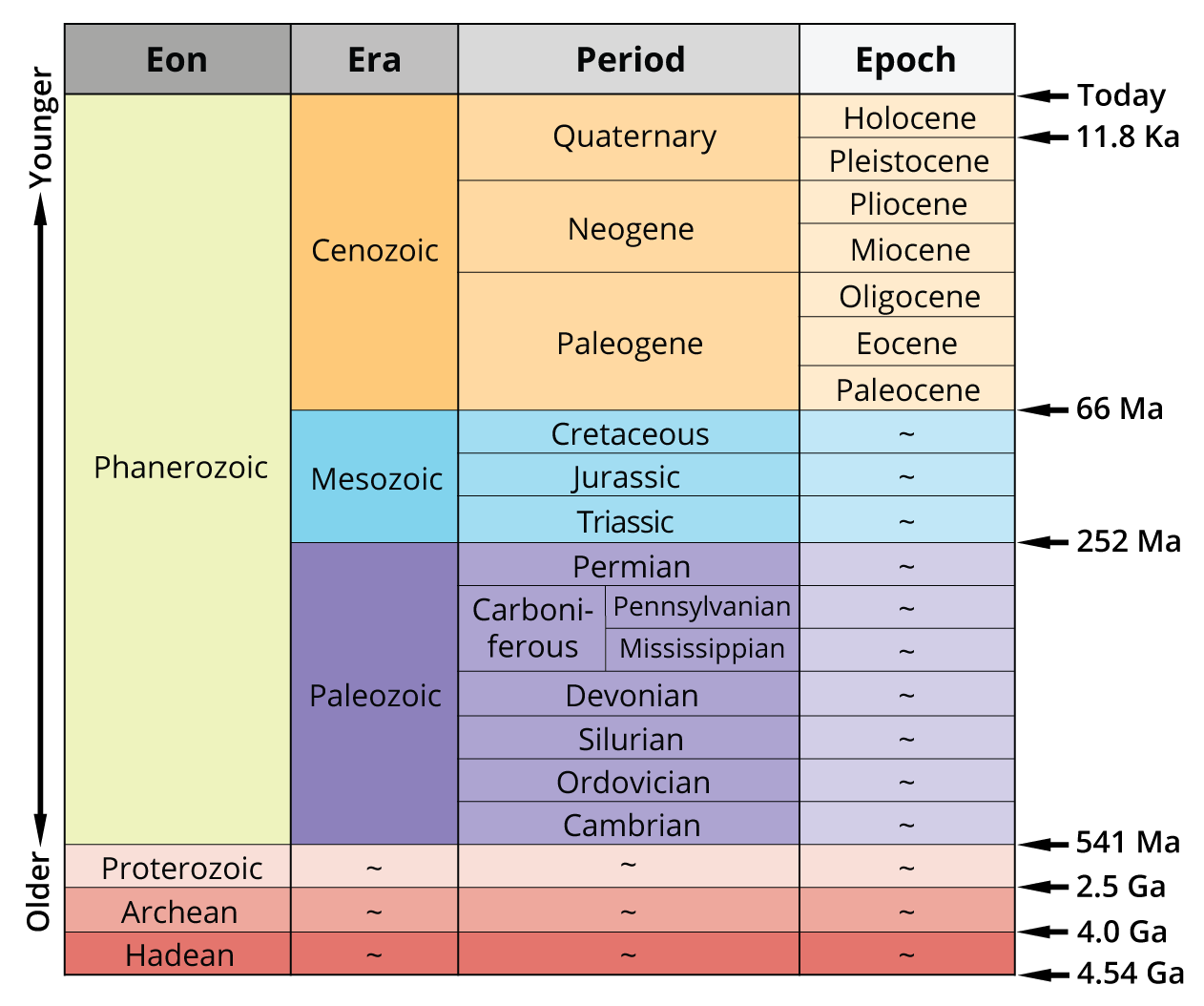Introduction
Primate evolution started during the Cenozoic Era around 65 million years ago. Two events prompted the adaptive radiation of the mammals
- The emergence of Angiosperms (flowering plants produced fruits and seeds high in calories for warm blooded animals. Mammals were a minor part of the fauna prior to the arrival of the angiosperms, but with a high quality food source, they increased.
- The extinction of the dinosaurs opened more ecological niches for mammals. Before, mammals could only come out at night when cold-blooded reptiles were inactive. After their extinction, mammals could inhabit all environments at any time.



Primates evolved from generalized, tree dwelling, nocturnal mammals into a variety of families, genera and species, most of which are now extinct.
Station 1: Geologic Time Scale
The Geologic Time Scale (GTS) is a system used by geologists, paleontologists, and other earth scientists to refer to the chronological dating of Earth’s history. In this week’s module, you will watch a video that summarizes the geological and environmental changes of Earth’s history through the beginning of the Cenozoic era (the current era we are in now, and in which primate evolution has occurred). It is most important that you know which eon we are in (the Phanerozoic), the eras of the Phanerozoic, and the epochs of the Cenozoic era.

Each epoch of the Cenozoic Era is characterized by environmental and geological changes that offered new opportunities for primates. Individuals that possessed mutations that gave them a selective advantage thrived in new environments while those that were less advantageously endowed remained in their old ecological niches or died out. The processes of selection, gene flow and genetic drift, acting on mutations created populations that became isolated from each other and developed into their own forms. The epochs of the Cenozoic era correspond roughly to the appearance of forms that have the features that define the main primate families. An easy way to remember both the epochs of the Cenozoic and the order of primate evolution is to think in terms of the ancestral and derived primate features that we studied in Lab 5 on Primate Taxonomy.
Check out this interactive website hosted by the Smithsonian to see how the land masses and environment have changed throughout Earth’s geologic history. https://www.smithsonianmag.com/science-nature/travel-through-deep-time-interactive-earth-180952886/
The Cenozoic Era
As you complete this lab, fill in the last column for the Paleocene through the Miocene epochs. (And use it as a study guide!)

Station 2: Paleocene Primates – Plesiadapiforms
The Paleocene begins with cool, dry global temperatures and the mass extinction event that eliminated the dinosaurs and many other species of plants and animals. Temperatures rose during the Paleocene and by the end it was extremely warm, with dense rainforests and ice-free poles.
The first primate-like mammal (proto-primate) appears in the Paleocene. Although technically not a primate, it has some similarities to the early primates. The first part of its name, “Plesi” means “close to” and “adapis” is the name of an Eocene lemuriform (lemur-like) primate. Plesiadapis was a very successful and diverse mammal with over 140 named species in 11 different families found in North America, Europe and Asia. Two fossils from Menat, France had the preserved outlines of skin and hair. This is how we know that Plesiadapis had a bushy tail.


Compare the illustration of a Plesiadapis skull below with the skull of a modern prosimian.


Station 2 Reflection Questions:
- Which of Plesiadapis‘ features are different from primates
- Which of Plesiadapis’ features prompt some researchers to place them in the primate order?